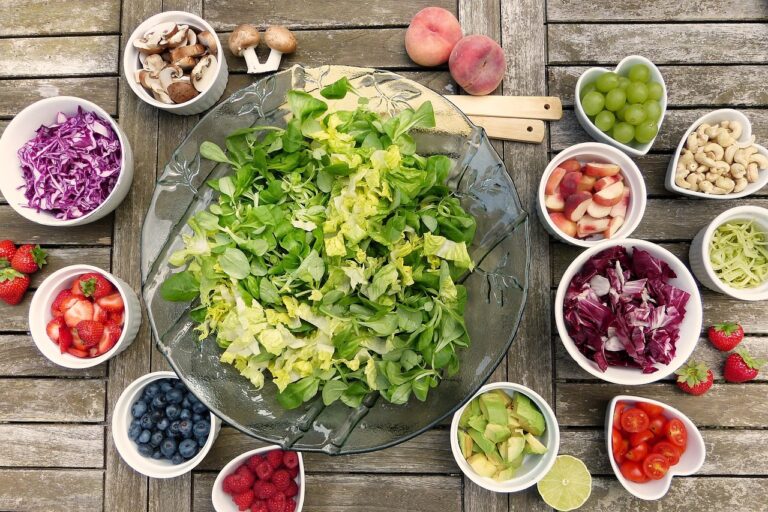How to Create a Balanced Meal Plan: A Guide to Nourishing Your Body

Creating a balanced meal plan ensures that you provide your body with the essential nutrients it needs for optimal health and energy. A balanced meal plan includes a variety of foods in the right proportions. Here are five compelling strategies to create a balanced meal plan:
1. Understand the Components of a Balanced Meal
A balanced meal consists of the following key components:
- Proteins: Essential for building and repairing tissues, proteins can be found in meat, poultry, fish, eggs, dairy, beans, nuts, seeds, and plant-based alternatives like tofu and tempeh.
- Carbohydrates: The body’s main source of energy, carbohydrates are found in grains, fruits, vegetables, and legumes. Choose complex carbs like whole grains, as they provide lasting energy and are rich in fiber.
- Fats: Necessary for brain function and hormone production, healthy fats are found in avocados, nuts, seeds, olive oil, and fatty fish. Opt for unsaturated fats over saturated and trans fats.
- Vitamins and Minerals: Crucial for various bodily functions, vitamins and minerals are abundant in fruits, vegetables, whole grains, and dairy products.
- Fiber: Important for digestive health and satiety, fiber is found in whole grains, fruits, vegetables, legumes, nuts, and seeds.
- Hydration: Adequate hydration is essential for overall health. Water should be your primary beverage, with additional options like herbal teas and low-fat milk.
2. Plan Balanced Meals and Snacks
Ensure that each meal and snack includes a mix of the key components to provide balance and variety.
Breakfast
Start your day with a nutritious breakfast that includes protein, healthy fats, and complex carbohydrates.
- Example: Greek yogurt topped with granola, berries, and a drizzle of honey.
Lunch
Create a balanced lunch that includes protein, vegetables, complex carbohydrates, and healthy fats.
- Example: Quinoa salad with chickpeas, cherry tomatoes, cucumber, feta cheese, and a lemon-tahini dressing.
Dinner
Dinner should include a variety of nutrients to keep you satisfied and nourished.
- Example: Baked cod with roasted sweet potatoes, asparagus, and a mixed green salad with olive oil vinaigrette.
Snacks
Choose nutritious snacks to keep energy levels stable throughout the day.
- Example: Apple slices with almond butter.
3. Balance Your Macronutrients
Aim to balance your intake of macronutrients (proteins, carbohydrates, and fats) in each meal to provide sustained energy and support metabolic functions.
- Protein: Include a source of protein in every meal and snack to help with muscle repair and growth, and to keep you feeling full.
- Carbohydrates: Choose complex carbohydrates such as whole grains, fruits, and vegetables that provide fiber and lasting energy.
- Fats: Incorporate healthy fats that support brain health and hormone production. Avoid trans fats and limit saturated fats.
4. Plan and Prepare Ahead
Planning and preparation are key to maintaining a balanced meal plan.
- Weekly Planning: Set aside time each week to plan your meals and snacks. Make a shopping list based on your meal plan to ensure you have all the necessary ingredients.
- Batch Cooking: Prepare larger portions of meals that can be stored and enjoyed throughout the week. This can save time and ensure you always have a nutritious option available.
- Portion Control: Be mindful of portion sizes to avoid overeating. Use smaller plates if necessary and include a variety of food groups on your plate.
5. Listen to Your Body
Pay attention to hunger and fullness cues to maintain a healthy relationship with food.
- Mindful Eating: Practice mindful eating by paying attention to the flavors, textures, and aromas of your food. Eat slowly and savor each bite.
- Hunger Signals: Eat when you’re hungry, and stop when you’re satisfied. Avoid eating out of boredom or stress.
Sample Balanced Meal Plan
Here’s a sample one-day balanced meal plan to get you started:
Breakfast
- Greek Yogurt Parfait: Greek yogurt topped with granola, fresh berries, and a drizzle of honey.
- Beverage: Herbal tea or water.
Morning Snack
- Apple Slices with Almond Butter.
Lunch
- Quinoa Salad: Quinoa mixed with chickpeas, cherry tomatoes, cucumber, spinach, feta cheese, and a lemon-tahini dressing.
Afternoon Snack
- Carrot Sticks and Hummus.
Dinner
- Baked Salmon: Baked salmon fillet served with roasted sweet potatoes, asparagus, and a mixed green salad with olive oil vinaigrette.
In conclusion, creating a balanced meal plan involves understanding the key components of a balanced meal, planning and preparing meals that include a variety of nutrients, staying hydrated, and listening to your body’s cues. By incorporating these strategies, you can enjoy nutritious and satisfying meals that support your health and well-being. Happy meal planning!






